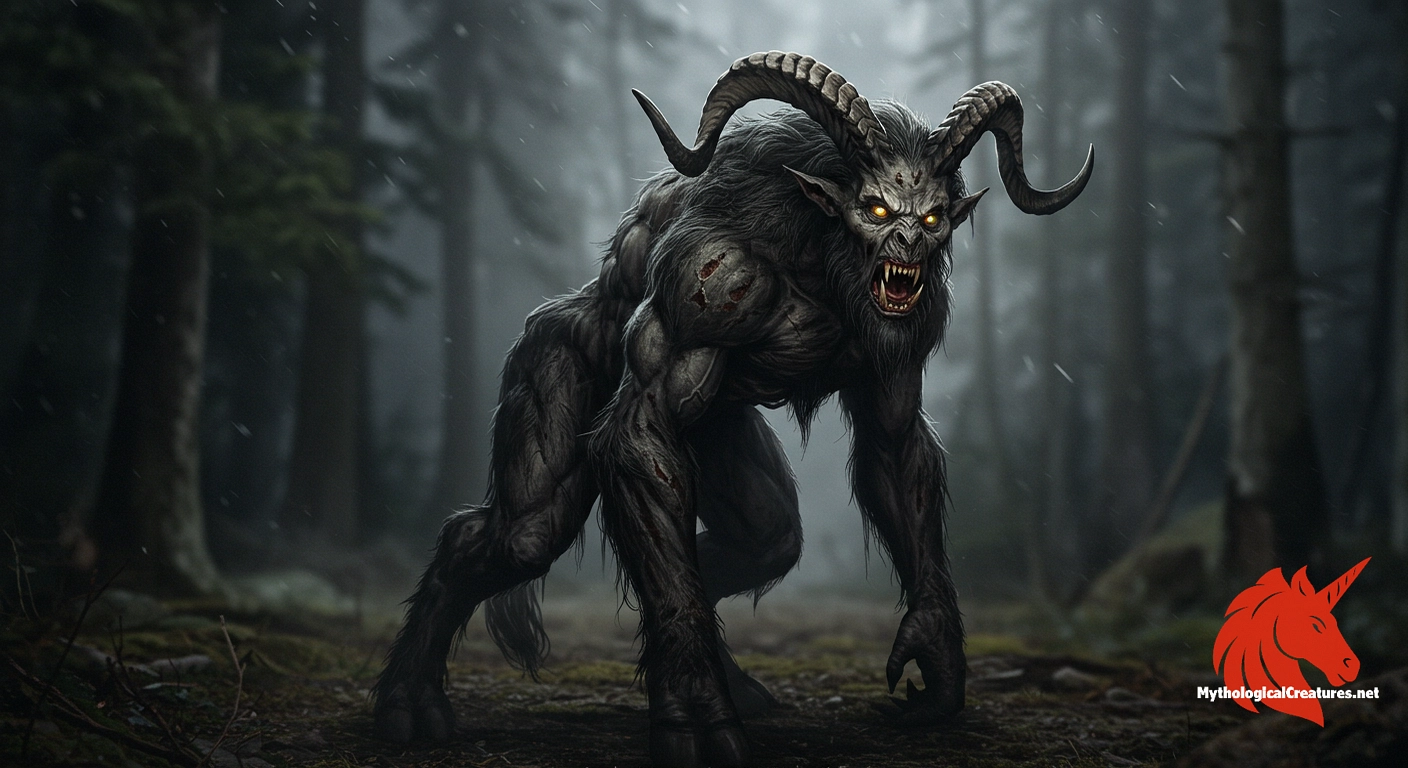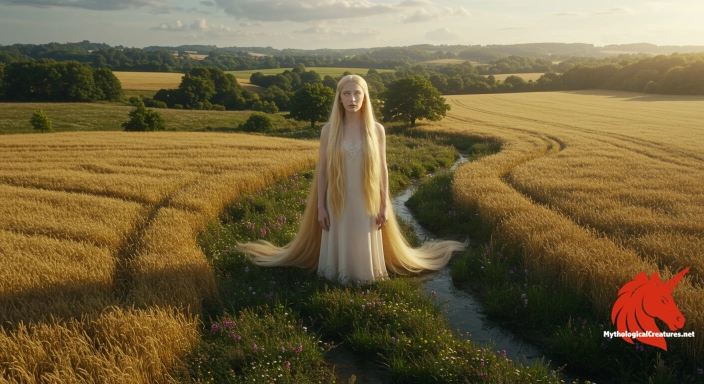Krampus: Krampus is a horned, demonic figure from Alpine folklore who accompanies Saint Nicholas during his December rounds.

Krampus
Krampus - Embodies the punitive aspect of holiday traditions, serving as a reminder of consequences for bad behaviour while balancing the generosity of Saint Nicholas
Origins & First Encounters
Krampus is a striking and enigmatic figure whose origins are woven into the fabric of Alpine folklore, emerging from a rich tapestry of pre-Christian and Christian traditions. His early appearances are nestled in the cultural memories of Central and Eastern European communities, where he exists as a dark, horned counterpart to the benevolence of Saint Nicholas. His role as a punitive spirit who metes out retribution for misbehaviour creates a compelling duality that has captured imaginations for generations. The creature’s narrative weaves together elements of ancient pagan rites with the moral imperatives of later Christian teachings. Over time, Krampus has evolved into a symbol that embodies both the harsh realities of winter and the societal need for discipline. The mystique surrounding him is multilayered, reflecting deep-seated beliefs about reward and punishment during the festive season. His presence during the dark winter nights serves as a vivid reminder of the boundaries between order and chaos. With a legacy that has expanded from remote Alpine villages to global popular culture, he remains a potent figure of myth and moral allegory.
Source Texts & Tale Variants
Accounts of Krampus can be traced back to oral traditions and regional folk literature, where his story was passed down through generations long before it found a written form. Early depictions in local art and festive rituals reveal a figure who lurks on the fringes of society, acting as a counterbalance to the generous Saint Nicholas. Variations of his myth can be found in weathered manuals of local customs, illustrated manuscripts, and even early woodblock prints that captured his terrifying presence. Some narratives describe him as a solitary spirit, while others make him a constant companion accompanying festive processions in wintry landscapes. Despite the scarcity of formal texts, Krampus’ story was robustly preserved in community performances and seasonal parades that younger audiences eagerly witnessed. Different communities have elaborated on his tale in diverse ways, adding layers of nuance to his character through regional storytelling. The repetitive cycle of his narrative in seasonal celebrations has contributed to a living tradition that evolves with each telling. Through these oral and visual records, the legend of Krampus has become a multi-faceted myth that continues to captivate both scholars and enthusiasts of folklore.
Form & Powers
Krampus is often depicted with a formidable visage, most recognisable by the pair of twisted, menacing horns that crown his head. His eyes, blazing with an eerie luminescence, convey a mix of ancient wrath and primordial wisdom. The creature’s body is usually cloaked in coarse, shaggy fur that enhances the wild, bestial impression of his form. Long, sinewy limbs and a gaunt, almost skeletal structure contribute to his imposing silhouette against the backdrop of dark Alpine nights. Dangling chains, sometimes interspersed with broken hooks or bells, further accentuate his unsettling appearance and add an auditory element to his fearsome reputation. Illustrations often show him wielding birch rods or switches, instruments of punishment that underscore his role as arbiter of misbehaviour. Size variations in artistic renditions suggest that while he can appear as a towering giant in some portrayals, other depictions render him with an agility that belies his bulk. Such detailed visual portrayals serve not only to frighten but also to symbolise a deep-rooted connection between nature’s untamed forces and human moral structure.
Regional Faces
Across various Alpine regions, the portrayal of Krampus takes on distinct local flavours that enrich his character and cultural resonance. In Austria and Bavaria, the figure comes alive in the annual Krampuslauf, where participants don elaborate costumes and masks that echo his traditional, fearsome features. In these local customs, Krampus is sometimes further embellished with specific adornments or regional symbols that reflect the unique identity of each community. Some areas integrate remnants of pre-Christian winter rites into his portrayal, aligning him with the raw, elemental power of the season. In parts of Eastern Europe, his myth mingles with other local spirits, yielding hybrid figures that share his punishing nature but carry additional layers of local myth. The variance in attire, ritualistic accessories, and even the severity of his punishment across regions points to a flexible narrative that adapts to local beliefs and customs. These regional adaptations allow communities to reinterpret the figure in a way that resonates with their social and cultural identities. Thus, the evolution of Krampus in different areas highlights the dynamic nature of folklore, where myth is continually reshaped by the hands of local tradition.
Cultural Parallels
The legend of Krampus finds fascinating counterparts in a number of global mythologies that feature grim, punitive figures during festive seasons. In parts of Germany, for instance, the character of Belsnickel bears similarities in function and form, serving as a rough guardian of moral conduct during winter celebrations. Comparable traditions also appear in Scandinavia, where figures like the Yule Goat merge the dual aspects of generosity and terror. There are echoes of Krampus in various Eastern European folktales, where dark spirits are summoned to admonish the disobedient. This wide-reaching motif reflects a shared cultural understanding of the need to balance the benevolence of gift-giving with the threat of retribution. Just as Krampus embodies the harsh realities of winter and discipline, other cultures utilise similar figures to navigate the complexities of human behaviour and societal expectations. The cross-cultural similarities emphasise the universality of using myth to regulate and explain human conduct. In comparative terms, Krampus serves as an intriguing example of how different societies employ analogous narrative tools to tackle the eternal struggle between virtue and vice.
Legacy & Modern Evolution
Over the centuries, the image of Krampus has undergone a significant evolution, mirroring broader shifts in cultural attitudes and artistic expression. What began as a regional folkloric terror has gradually been embraced by modern popular culture, finding a cosy yet subversive niche in contemporary festive celebrations. Modern interpretations often blend elements of humour and horror, transforming him into a cult figure celebrated in parades, movies, and digital media. The traditional Krampuslauf, for instance, not only revives ancient rituals but also infuses them with a contemporary spirit of communal revelry. Artistic reinterpretations in film and literature have explored his character in nuanced ways, sometimes even rendering him a sympathetic figure caught between myth and modernity. His iconic presence on holiday greeting cards and in merchandising indicates the strong visual impact and cultural staying power of his image. Contemporary portrayals frequently juxtapose his dark, punitive role with an element of playful rebellion, reflecting current societal themes. As a result, Krampus today serves as both a reminder of the rich layers of mythic tradition and a dynamic symbol that continues to inspire fresh storytelling in a modern world.
Interesting Fact
Despite his terrifying reputation, Krampus has enjoyed a modern resurgence in popular culture, appearing in films, TV shows, and art, which underscores his enduring appeal as both a cultural relic and a subject of reinterpretation.
Quick Creature Info
Origin:
Features:
Associations:
Our Mythic Legendary Rating:

Habitat:
Supernatural Powers:
Physical Attributes:
Abilities:
Behavior:
Lore:
Related Creatures, Tales or Lore
- BBelsnickel
- ZZwarte Piet
- SSchmutzli
References
Discover Another Mythical Legend You May Not Have Heard Of?
Uncover the mysteries of ancient folklore and expand your knowledge of legendary beings from cultures around the world.
Dare to Meet the Sif....
Mythical Disclaimer: The images and data on this site are derived from various historical and literary sources, but we have found that many myths often have multiple versions and interpretations across references, sometimes contradictory. As a result, these creature depictions are artistic interpretations—imaginative blends of folklore, legend, and a dash of AI guesswork. Because creature descriptions vary widely, our illustrations and accompanying information represent our best effort to honor mythology while bridging creative gaps. Enjoy these interpretations—just remember, we've done our best to respect the stories and validate available data, but in the realm of mythology, details often shift, imagination leads the way, and nothing is ever set in stone!
Curated by the Mythological Creatures Team (rev. May 2025)
